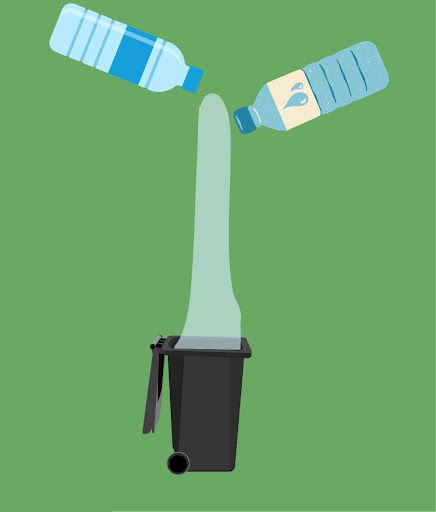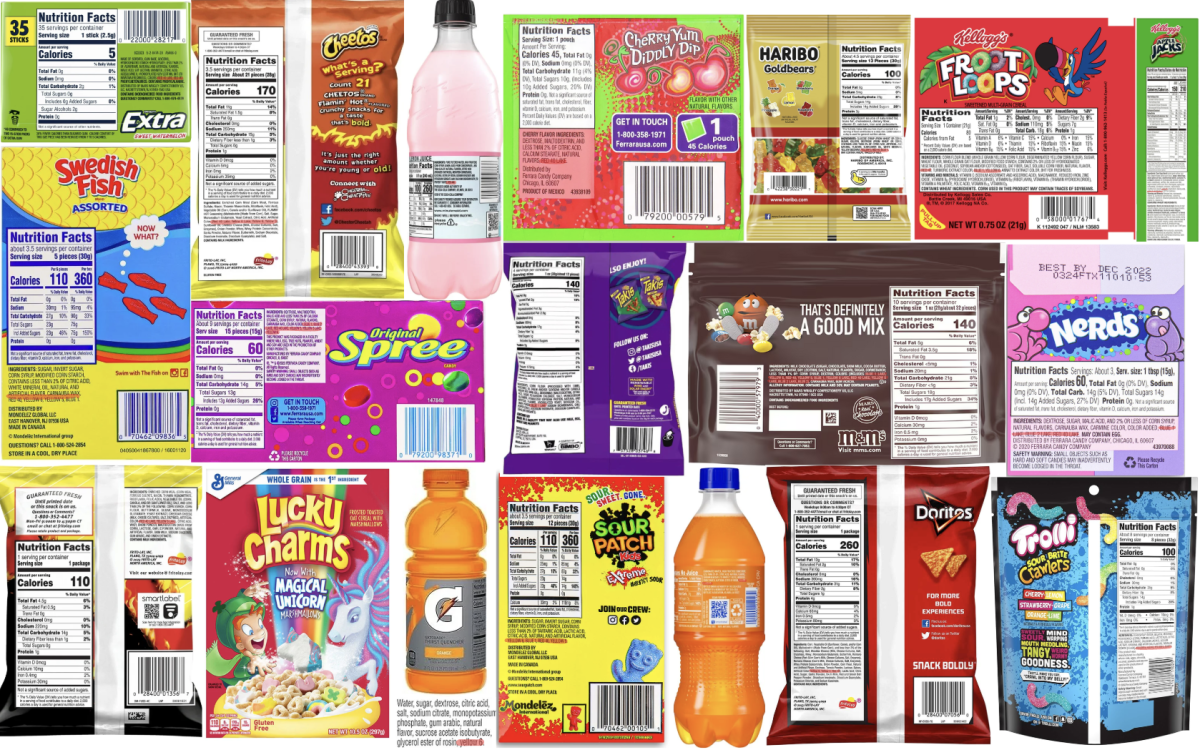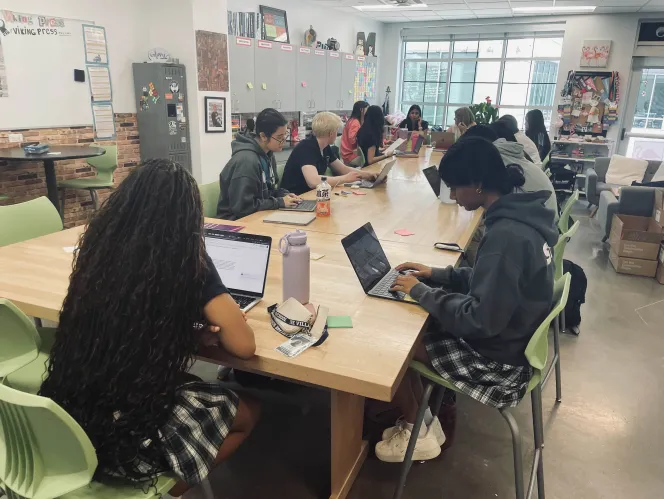We all need water—regardless of whether you drink it or not. As the most consumed beverage, there are numerous ways to get water. People get water from various sources like the tap, a Brita filter, etc. People debate over water brands from Poland Spring to Fiji Water. Whenever you want some water on The Village School’s campus, where should you get it?
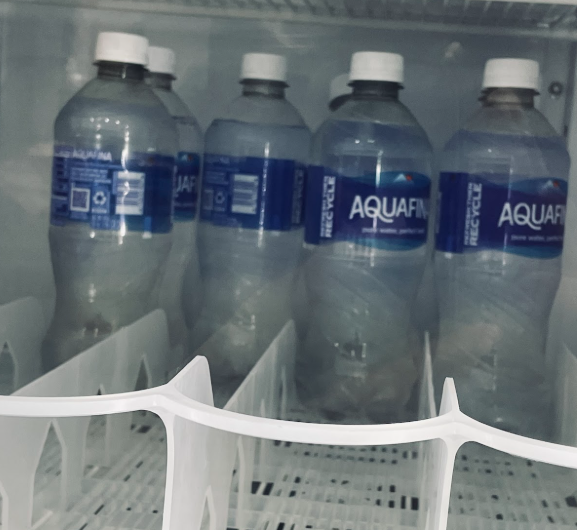
Possibly the most common place to get water on campus is the plastic water bottles sold in the cafeteria, and more prominently, the school store. Sold there for $2.50, these water bottles, like Aquafina and Topo Chico (a sparkling water brand), are cold and offer a container to carry around, useful for when you forgot your water bottle.
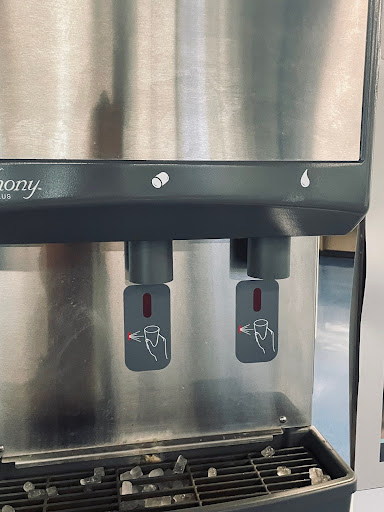
If you’ve ever seen people walking around with plastic cups with the signature crunchy ice, that’s the cafeteria water. Coming out of a water and ice dispenser, many people praise the cafeteria water; it’s also one of the only places to get iced water on the campus. Unlike the plastic water bottles, the plastic cups in the cafeteria are reusable and waste-free. However, washing the cups contributes to the mass amount of water used to wash the cafeteria dishes.
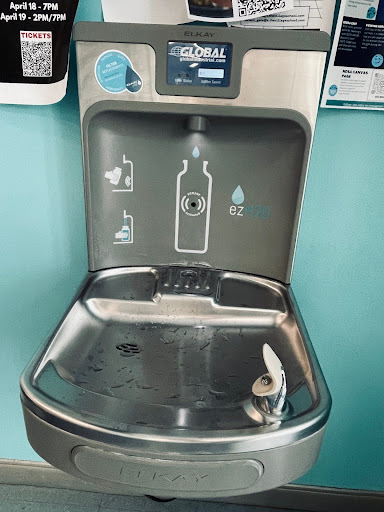
When you just want a bit of water to refresh yourself or you want to refill your water bottles, the water fountains serve this purpose. Spread out all across campus, the water fountains offer filtered water without the waste of plastic water bottles. The fountains have markers listing how many plastic bottles they’ve saved through refills. For example, the fountain in the cafeteria has saved roughly 50200 bottles.
In terms of sustainability, plastic water bottles are clearly the worst. Plastic water bottles use massive amounts of energy to produce and take centuries to decompose. They fill up landfills and plague oceans. Only a fraction of these bottles actually get recycled, so the majority can pose dangers to wildlife and the environment. Comparatively, the water fountains and dispensers are reusable and have little to no waste. Both need periodic filter replacements, and the cafeteria dispensers use more water to clean the cups.
These three water sources also have differing levels of accessibility and use. For someone playing a sport, a plastic water bottle is useful when they don’t have their own closed container. However, unlike the other two, this option costs money, which may be a problem for some. While $2.50 is not a large sum to pay, this can add up, especially if you depend on these water bottles for daily hydration. The cups in the cafeteria serve a similar purpose, but the plastic cups cannot be taken from the cafeteria, and the paper cups aren’t sealed like a plastic bottle. When both of these options pose a problem, many turn to the water fountains. These are scattered across campus, so one can access water regardless of whether they have a bottle.
To some, the most important factor when picking water is taste. Slight variability in factors like minerals, pH levels, and chemicals, particularly chlorine and fluorine. Water bottles are often perceived as tasting better because of minerals and the lack of chlorination/fluoridation. I’ve been guilty of buying a plastic water bottle when I could’ve just as easily filled up my own. But is this perceived discrepancy in the taste just a placebo? To figure it out, I performed a mini blind experiment. I asked Annali Zhao, Bazil Lalani, and Chole Xia (all sophomores) to taste each water and try to identify where it came from. They didn’t see the bottles, and each was filled with a small amount of ice to maintain a similar temperature.
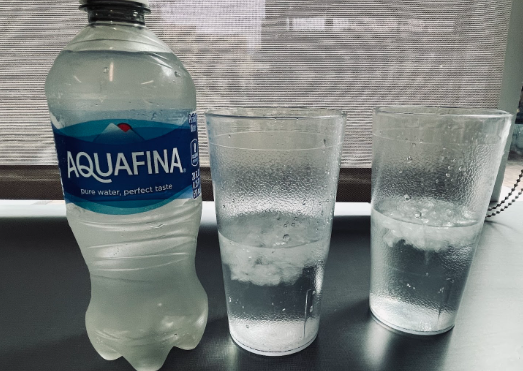
| Aquafina (bottled water) | Cafeteria water dispenser | Water fountain | |
| Annali | Aquafina (correct) | Dispenser (correct) | Fountain (correct) |
| Bazil | Dispenser (incorrect) | Fountain (incorrect) | Aquafina (incorrect) |
| Chole | Aquafina (correct) | Fountain (incorrect) | Dispenser (incorrect) |
These results vastly vary, with all, none, and one correct. While this is a small sample size, these results may indicate people aren’t the best at pinpointing the tastes of water. However, all three students marked the water fountain as the worst tasting water. This may be because of the filter’s red status so the taste of the water may vary by water fountain location.
It’s obvious that these water sources have different tastes. When I tasted each myself, I much preferred the bottled and cafeteria water over the fountain water. For its good-tasting water, accessibility to ice on hot days, and better sustainability, I give the cafeteria water dispenser a 7/10, dragged down by its inaccessibility when you want just some water or a container. The bottled water gets a 6/10, praised for its conveniences while dragged down by plastic use and price. And finally, the water fountains get a 4/10, only being saved by its conveniences around campus. However, bringing your own water bottle gets a 10/10. By taking water from home, you can guarantee its cleanliness, you don’t waste any materials, and you can hydrate on your terms. But either way, hydrate yourself any way you can. Hydration is salvation.

